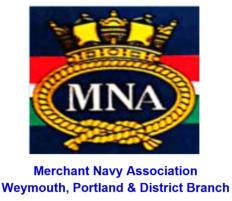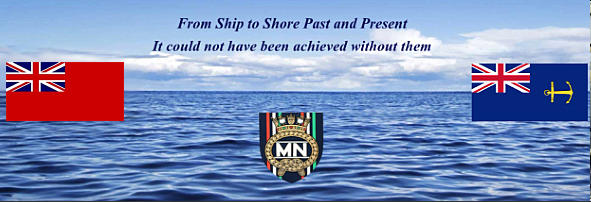


Early Years
Weymouth is (potentially) the besr deep water port on the south coast of England and has been for many centuries with evidence
showing that Roman galleys sailed up the River Wey as far as Radipole where they would beach and unload cargo to transport to the
Roman Town of Durnovaria (Dorchester).
By 1252 Weymouth was established as a seaport and became a chartered borough. Melcombe Regis developed separately on the
peninsula to the north of the harbour; it was mentioned as a licensed wool port in 1310.
The Port of Weymouth supplied 15 ships and 263 mariners in 1347 for the siege of Calais which had begun in 1346.
The Black Death (or Bubonic Plague) entered the British Isles through the port of Melcombe Regis in 1348. Most likely to have been
brought ashore by the fleas off the rats infesting the ships that had sailed around the continent, but by fleeing the local towns and
moving inland, the people of Dorset spread the plague across the country.
In their early history Weymouth and Melcombe Regis were rivals for trade and industry, but the towns were united in an Act of
Parliament in 1571 to form a double borough. Both towns have become known as Weymouth, despite Melcombe Regis being the
main centre. The villages of Upwey, Broadwey, Preston, Wyke Regis, Chickerell, Southill, Radipole and Littlemoor have since
become part of the built-up area.
In 1588 six of the English ships sailed from Weymouth for the fight against the Spanish Armada. A battle off Portland followed and the
Spanish ship ‘San Salvador’ was captured and brought into the harbour.
In the middle of the 17th Century, Weymouth was heavily involved in the Civil War between Charles I and Parliament. In 1645,
several royalist plotters within the twin towns of Weymouth and Melcombe conspired to deliver the ports back into the control of King
Charles 1. Evidence of the ensuing duels can still be seen today high up in the wall of a house in Maiden Street where a cannonball
is still lodged underneath a window!
The Coming of the Railway
With the advent of railway mania, a number of schemes to reach Weymouth were proposed with the objective of opening up trade
routes to the Channel Islands. The first of these proposals was a line from Bath to Weymouth in 1836.
The London & South Western Railway opened their main line from London to Southampton in 1839. The Southampton &
Dorchester Railway was authorised on 21 July 1845. Construction of the S&D proceeded rapidly with the main line and Poole
branch opened to passenger traffic on 1 June 1847. However, the line did not reach Weymouth until 20 January 1857 and powers
to extend the line to Weymouth Quay were allowed to lapse.
As expected, the railway quickly brought prosperity to Weymouth, which rapidly developed as a both a cross-channel port and
holiday resort. Weymouth station was to the north of the town and a mile from the harbour, and it was soon clear that an extension
to the quay was desirable, but, for contractual reasons, this would have to wait until construction of the Portland branch.
The first ferry service between Weymouth and the Channel Islands was launched
in 1794 with a packet steamer service. Although this was originally only for trading
purposes, it also gave rise to many Dorset families settling in the Channels
Islands. The Weymouth Harbour tramway opened on 16 Oct 1865 running from a
junction with the Portland branch through the streets adjacent to the backwater
and the harbour to the quay. Initially the tramway handled only goods traffic and
was worked by horses until 1880. In 1889 the GWR took over the ferry service,
with the first passenger tram running on 4 August 1889 after the tramway was
extended to the new ferry terminal allowing travellers to reach the Channel Island
ferries which operated from the Quay.
Passenger trains were withdrawn from 6 September 1939 at the start of WW2 with
the station reopening on 25 July 1940 for specials such as refugee trams. It was
fully reopened on 15 June 1946. Cargo traffic was also suspended on 1 July 1940
following German occupation of the Channel Islands, restarting on 18 September 1945. The GWR remained the sole operator of
the service until 1948 when the railways were nationalised as British Rail.
The 1889 ferry terminal was replaced with a new structure in the late 1960s. Regular goods traffic ceased on 26 February 1972
because there was insufficient space to handle the growing container traffic. The service was transferred to Southampton,
although fuel oil was transported to a facility at the pier with two trams a week until September 1983.
In March 1983 there was a trial run of a diesel unit prior to the introduction of a regular service from Bristol during the summers of
1984-85. Regular passenger services ceased in September 1987.
The Great Western Railway Company (GWR) commenced Weymouth-Channel Islands and French ports services in 1889 with three
ships the Lynx, Antelope and Gazelle built by Laird Bros of Birkenhead. At 672 gross tons, they cost £35,000 to build and were the
first twin screw steamers with triple expansion engines to operate on the channel island route.
Antelope: Transferred to the Plymouth - Brest route from 1910. In 1913 she was sold
to Greece, and renamed Atromitos. Finally scrapped in 1933.
Gazelle: Was scrapped in 1925, after running cargo-only since 1908.
Lynx: Transferred to the Plymouth – Nantes route in 1910. Finally scrapped in 1925.
Ibex: At 1,160 gross tons, Ibex was a larger version of the three ships launched in
1889, and joined them at
Weymouth in 1891. She struck
the Noirmontaise rocks off
Jersey on 16 April 1897 and
was beached in Portlet Bay.
On 5 January 1900 she struck
a reef at St Peter Port,
Guernsey and sank. One
passenger and one crewman
died. She was raised on 21 July 1900 and returned to service the following
April after repairs. In 1916 a 12-pound gun was mounted on her stern and on
18 April 1918 she fired on and sank a U-boat for which the crew received a
£500 reward. Ibex was finally scrapped in 1925.
In 1897 GWR ordered two new ships from the Naval Construction and Armaments Company in Barrow-in-Furness. At 1282 gross
tons, they were basically enlarged versions of the Lynx class vessels already in operation.
Reindeer: Operated as a minesweeper in the Mediterranean during World War I and afterwards returned to Weymouth. She was
broken up at Briton Ferry in 1928.
Roebuck (1): the second of the vessels added to the Weymouth fleet in 1897 proved
unlucky. On 26 January 1905 she caught fire while moored at Milford. The weight of
water used to put out the fire caused her to sink but she was raised nine days later
and returned to service in June. She ran aground after leaving St Helier on 19 July
1911, refloated on 28 July and returned to service four months later. In 1914 she was
converted for minesweeping and renamed HMS Roebuck. On 13 January 1915 she
dragged her anchor at Scapa Flow and sank following a collision with HMS
Imperieuse. In 1914 she became HMS Roedean and sank in 1915 after a collision.
Alone amongst the pre-grouping railway companies, the GWR retained its identity in
1923. The GWR set about replaced its fleet in 1925 with the new passenger steamers
St Helier and St Julien, plus cargo-only Roebuck (2) and Sambur.
St Julien: 1,885 gross tons,
she was delivered with a second dummy funnel, which was soon removed. In
1939 she became a hospital ship, and was returned to her owners in 1946. St
Julien was scrapped in 1961, replaced by the new Caesarea and Sarnia.
St Helier: 1,885 gross tons, she was also delivered with a second dummy
funnel, which was soon removed. In 1940 she became HMS St Helier. In
1945 she was returned to her owners. St Helier was scrapped in 1960,
replaced by the new Caesarea and Sarnia.
Roebuck (2): The old name was revived in 1925 for a new, 776 gross tons,
cargo vessel built by Swan, Hunter and Wigham Richardson on Tyneside. In
1940 she rescued more than 600 British troops from Dunkirk, after which she
was used for war work in the Thames and around northern France for which
she was temporarily renamed Roebuck II. She returned to railway service after the war and resumed operation at Weymouth until 27
February 1965. The previous November she had been disguised as the Norwegian SS Galtesund for the film ‘Heroes of Telemark’
starring Kirk Douglas and Richard Harris.
Sambur: Also built in 1925 and identical to Roebuck 2 at 776 gross tons, she became
HMS Toreador during WW 2, returning to her owners in 1945. Sambur was scrapped
in 1964.
St Patrick: 3,482
gross tons, was
launched by Cammell
Laird in May 1947 for
the Fishguard service
but worked from
Weymouth from 1948
to 1963 before being
transferred to work at Dover and Folkestone. She was owned by the
Fishguard & Rosslare Harbours Board and retained her red and
black funnel for some time. In 1963, after arrival of the new
Caesarea and Sarnia, St Patrick moved to the Southampton to St
Malo & Le Havre services. In 1965 she moved again to Folkestone-
Boulogne. In 1972 she was sold to Greece and renamed Thermopylae.
British Railways ferry services were formed in 1948, inheriting the ships from former LMS, LNER, SR and GWR fleets. British
Railways was rebranded ‘British Rail’ in 1965 and then ‘Sealink’ in 1970. In 1979 the ownership of vessels was transferred to Sealink
UK Ltd, in preparation for the privatisation of the railway fleet. In 1984, Sealink was acquired by Sea Containers Ltd, becoming
Sealink British Ferries. After a lengthy battle, Stena Line completed a hostile takeover of Sealink in 1990, the company then being
known as Sealink Stena Line until later absorption into the Stena Fleet.
Caesarea: 4174 gross tons, was built by J. Samuel White & Co, Cowes, Isle of Wight,
in 1960. She served between Weymouth and the Channel Islands until 1976, when
she transferred to Dover for services to rail-connected services to Calais and
Boulogne. From 1980 she also sailed from Folkestone. Caesarea was withdrawn in
1980 and passed through various owners as Caesarea without re-entering service
until broken up in Singapore in 1986.
Sarnia: 4174 gross tons, was built by J. Samuel White & Co, Cowes, Isle of Wight, in
1961. She served between Weymouth and the Channel Islands until 1977, with
occasional relief work from Dover or Folkestone. Sarnia was sold to Supersave
Supermarkets for use as a duty-free shop running between Oostende and Dunkerque as the Aquamart, operated by Channel Cruise
Lines of Guernsey (which is outside the EU). The service only ran for a few weeks. Aquamart was sold to Greek owners as Golden
Star, then Hitta Establishment of Saudi Arabia as Saudi Golden Star carrying pilgrims between Port Said, Aqaba and Jeddah. She
was broken up in Pakistan in 1987.
Earl William: was originally Viking II, 3,670 gross tons, built in 1964 by Kaldnes
Mekaniske Verksted A/S, Tönsberg, Norway, for Otto Thoresen for service between
Southampton and Cherbourg. In 1976 Viking II was sold to Sealink British Rail and
renamed for services from Portsmouth and Weymouth to the Channel Islands and
Cherbourg. Earl William operated briefly from Weymouth in May 1981, returning in
summer 1982 for Weymouth to Cherbourg services. In 1984, Sealink ownership
passed to Sea Containers and in 1985 she moved to Weymouth-Channel islands
routes. Competition from Channel Island Ferries (CIF) began at this time, ending
the Sealink monopoly. CIF rapidly gained market share, and it was announced that
a joint service as British Channel Island Ferries would run in 1986. This never
occurred due to strike action by Sealink crews. Earl William initially blocked the link
span in St Peter Port (Guernsey), but she later moved to Weymouth. In 1987 Earl
William was moved to Harwich for use as a detention centre for "illegal"
immigrants. On the night of October 16/17th 1987 Britain was hit by a hurricane and Earl William broke her 22 mooring ropes and ran
ashore. The detainees were removed and housed elsewhere, whilst Earl William was repaired for a return to service.
Earl Godwin :was originally Svea Drott built for Stockholms Rederi AB Svea in 1966 by Ab Öresundvarvet, Landskrona. She was
sub-chartered to British Rail/Sealink for their Weymouth-Channel Islands services, followed by purchase in 1975 and renaming.
Whilst working predominantly out of Weymouth, she also operated for periods on the
Portsmouth - Channel Islands route. In 1990 Earl Godwin was sold to Moby Lines for
use as Moby Baby between Piombino-Portoferraio (Elba).
Earl Harold: was originally Ailsa Princess, 6177 gross tons, was built in Venice in
1971 for the British Rail/Sealink Stranraer to Larne service. She was chartered by the
Ministry of Defence in 1982, for trials as a minelayer, then moved to the Weymouth to
Cherbourg service for Sealink. In 1985 she was renamed and placed on the Channel
Islands route until sold to Greek interests in 1989 as Dimitra. She remained in Greece
until 2010 when she was eventually broken up in India.
WEYMOUTH PORT
CONDOR FERRIES
With the demise of British Railways’ Channel Islands/St Malo operations in1963, a new
company was formed in Jersey called Condor Ltd. Condor 1 was introduced to the new
service on 20th June 1964, operating daily services between Saint-Malo, Saint-Helier
(Jersey), Saint-Peter Port (Guernsey) and Sark.
By 1985 Condor Ltd had three ships and decided to purchased the hydrofoil Condor 7, which
was the last hydrofoil bought by the company.
In September 1986, the workers of the ferry company Sealink went on strike, preventing the
company from operating services to the Channel Islands from Weymouth and Portsmouth.
As a consequence, Condor Ltd decided to provide an alternative service using its hydrofoils
from the Channel Islands to Weymouth for the affected travellers. It proved to be so
successful that the company decided to establish a regular service for 1987.
Condor’s hydrofoils were able to cut two hours off the time required to link the
Channel Islands to Weymouth compared to Sealink’s conventional ferries. Condor 5
operated the first year of this service and proved so popular that the company, in
order to increase passenger capacity, purchased catamaran Condor 8 in 1988 and a
much bigger catamaran, Condor 9, in August 1994.
Until this time sevices were for passengers only but Condor noted that there was a
growing demand for a fast service that would also be able to carry cars. Thus, for the
beginning of the 1993 summer season, the company decided to purchase a high
speed craft equipped with a garage from the Australian shipyard Incat, which was the
only one building car-carrying high speed ferries at the time.
The resulting 74m long catamaran, Condor 10, was able to carry 580 passengers (a
hundred more than Condor 9) with 84 cars.
In the winter of 1993/1994 Condor's parent company, Commodore Shipping, took over
British Channel Island Ferries (BCIF) which operated conventional ferry services to the
Channel Islands from Poole. Condor then moved all passenger services to Weymouth
whilst the BCIF freight service was transferred to Commodore Shipping. From 1994 the
BCIF vessel Havelet ran a conventional ferry service from Weymouth alongside the Condor
10, thus providing an all-weather capability.
In 1994, faced with the success of the Weymouth to Channel Islands high speed service,
Condor 10 proved to be insufficient for the growing traffic. As a result, Condor Ferries
decided to charter the 78 feet long Condor 11, able to carry 600 passengers and 145 cars, to
be introduced by March 1995. However, during Sea Trials, Condor 11, mastered by Incat’s
chairman Robert Clifford, grounded off the coasts of Tasmania whilst at high speed, damaging her hulls. Condor 11 had to go back to
Incat’s shipyard in Hobart to enable repairs, delaying her introduction. Thus, Condor Ferries had to charter the 74m-long Seacat Isle
of Man as a stand-in.
Condor 11 was eventually delivered in May 1995 but she too proved
unable to provide the required capacity and was sent back to her
owners at the end of the summer. Moreover, Condor 11 had not been
well welcomed by Condor Ferries’ customer, whilst her design
prevented her from reaching top speeds when loaded. Therefore, the
company decided to charter Condor 12, able to carry 700 passengers
and 185 cars, for summer 1996. Yet again, however, the group's
monopolistic position drove a growing demand for Condor Ferries’
services.
Condor 12 also
proved to be too
small so, in 1997,
Condor Ferries took delivery of an even larger Incat catamaran, Condor Express,
capable of carrying 900 passengers and 200 cars.
In March 1997 Condor started operations from Poole. With the introduction of
Condor Express, Condor Ferries' aim was to operate only fast services, resulting
in the scrapping of the conventional service operated by Havelet, which had
proved to be unprofitable due to the competition made by fast ferries. As a
consequence, Havelet was laid up and sent back to her owners.
On the other hand, Condor Express suffered from abundant teething problems
during her first year of services, inducing a lot of cancellations, whilst there was
no alternative service to the Channel Islands. As a result, they were forced to purchase the Havelet to act as an all-weather back-up
until the delivery of a new conventional vessel in 1999.
The company decided to create a new service for Summer 1998 season that would link Weymouth and Saint-Malo via Guernsey. It
was planned to operate the service with Condor 10, but Hoverspeed required her for another route. Therefore, it was decided to
purchase Incat Hull 044, a sister ship of Condor Express, for this new route. Renamed Condor Vitesse, she was operated at half her
capacity to allow for potential Condor Express failures. These two vessels remaineded in service until operations were ended in 2015.
From February 2012 until July 2013 Weymouth port was closed whilst the unsafe ferry berth was re-built.
Whilst celebrating its 50th anniversary with an open day in St. Malo in
June 2014, Condor Ferries announced that they had purchased a new
ship, the Austal Hull 270, to replace both Condor Express and Condor
Vitesse on the Weymouth route. They ran a competition asking
islanders to name the so-called Condor 102. Inhabitants of both
Jersey and Guernsey decided to name her Condor Liberation,
referring to the liberation of Jersey on 9th May 1945 during World War
Two. However, the new ship was never introduced on the Weymouth
route since the authorities could not raise the funds to build a new
berth and dredge the port to enable Condor Liberation to use the
harbour at very low tides. As a result, in March 2015, Condor Ferries
withdrew completely from Weymouth, transferring all operations to
Poole.
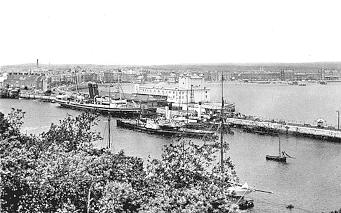
Weymouth Quay c1912
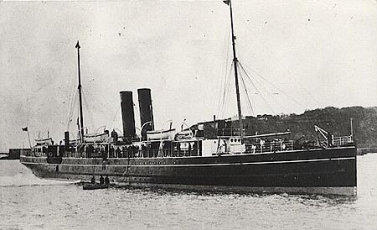
Ibex
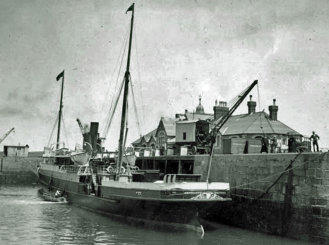
Antelope

Roebuck 1
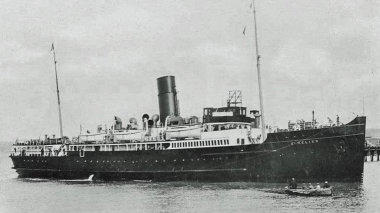
St Helier
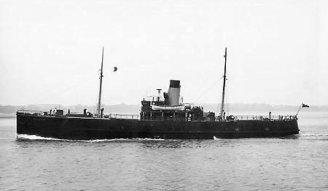
Sambur
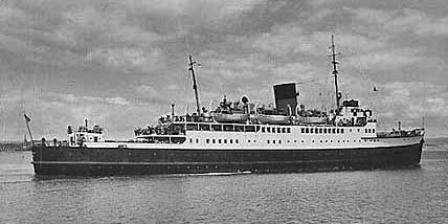
St Patrick
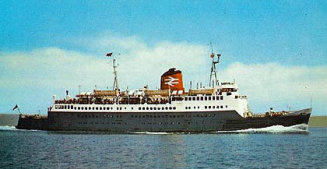
Caesarea
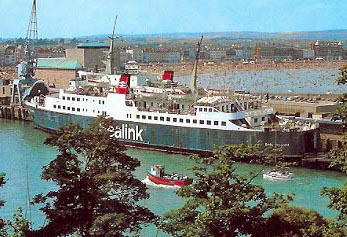
Earl William

Earl Harold

Condor 1
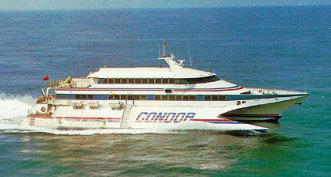
Condor 9
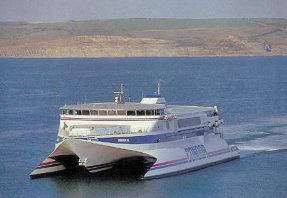
Condor 10
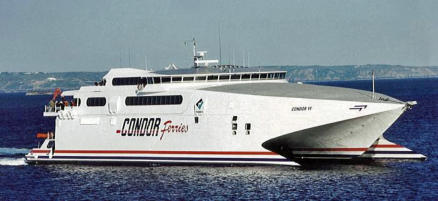
Condor 11
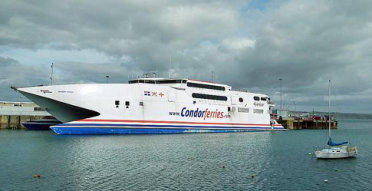
Condor Express
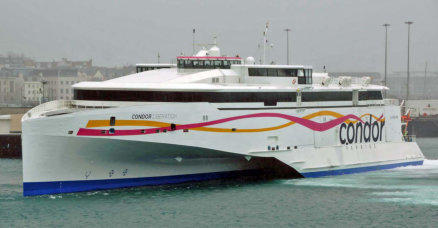
Condor Liberation
GWR/British Rail/Sealink Ferries
HISTORIC SHIPS


